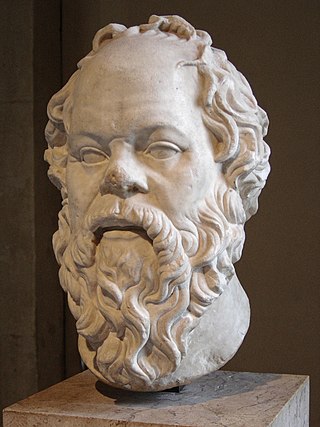
The 4th century BCE started the first day of 400 BCE and ended the last day of 301 BCE. It is considered part of the Classical era, epoch, or historical period.
This article concerns the period 469 BC – 460 BC.

This article concerns the period 409 BC – 400 BC.
Year 408 BC was a year of the pre-Julian Roman calendar. At the time, it was known as the Year of the Tribunate of Iullus, Ahala and Cossus. The denomination 408 BC for this year has been used since the early medieval period, when the Anno Domini calendar era became the prevalent method in Europe for naming years.
This decade witnessed the continuing decline of the Achaemenid Empire, fierce warfare amongst the Greek city-states during the Peloponnesian War, the ongoing Warring States period in Zhou dynasty China, and the closing years of the Olmec civilization in modern-day Mexico.
This article concerns the period 399 BC – 390 BC.
This article concerns the period 379 BC – 370 BC.
This article concerns the period 389 BC – 380 BC.
This article concerns the period 369 BC – 360 BC
This article concerns the period 339 BC – 330 BC.

Year 470 BC was a year of the pre-Julian Roman calendar. At the time, it was known as the Year of the Consulship of Potitus and Mamercus. The denomination 470 BC for this year has been used since the early medieval period, when the Anno Domini calendar era became the prevalent method in Europe for naming years.
Year 469 BC was a year of the pre-Julian Roman calendar. At the time, it was known as the Year of the Consulship of Priscus and Caeliomontanus. The denomination 469 BC for this year has been used since the early medieval period, when the Anno Domini calendar era became the prevalent method in Europe for naming years.
Year 360 BC was a year of the pre-Julian Roman calendar. At the time, it was known as the Year of the Consulship of Ambustus and Visolus. The denomination 360 BC for this year has been used since the early medieval period, when the Anno Domini calendar era became the prevalent method in Europe for naming years.
Year 380 BC was a year of the pre-Julian Roman calendar. At the time, it was known as the Year of the Tribunate of Poplicola, Poplicola, Maluginensis, Lanatus, Peticus, Mamercinus, Fidenas, Crassus and Mugillanus. The denomination 380 BC for this year has been used since the early medieval period, when the Anno Domini calendar era became the prevalent method in Europe for naming years.

Archelaus was king of the ancient Greek kingdom of Macedon from 413 to 399 BC. He was a capable and beneficent ruler, known for the sweeping changes he made in state administration, the military, and commerce. By the time that he died, Archelaus had succeeded in converting Macedon into a significantly stronger power. Thucydides credited Archelaus with doing more for his kingdom's military infrastructure than all of his predecessors together.

Amyrtaeusof Sais is the only pharaoh of the Twenty-eighth Dynasty of Egypt and is thought to be related to the royal family of the Twenty-sixth Dynasty. He ended the first Persian occupation of Egypt and reigned from 404 BC to 399 BC. Amyrtaeus' successful insurrection inaugurated Egypt's last significant phase of independence under native sovereigns, which lasted for about 60 years until the Persians conquered the country again.
Nepherites II or Nefaarud II was the last pharaoh of the feeble and short-lived Twenty-ninth Dynasty, the penultimate native dynasty of Egypt.

Nefaarud I or Nayfaurud I, better known with his hellenised name Nepherites I, was an ancient Egyptian pharaoh, the founder of the 29th Dynasty in 399 BC.





